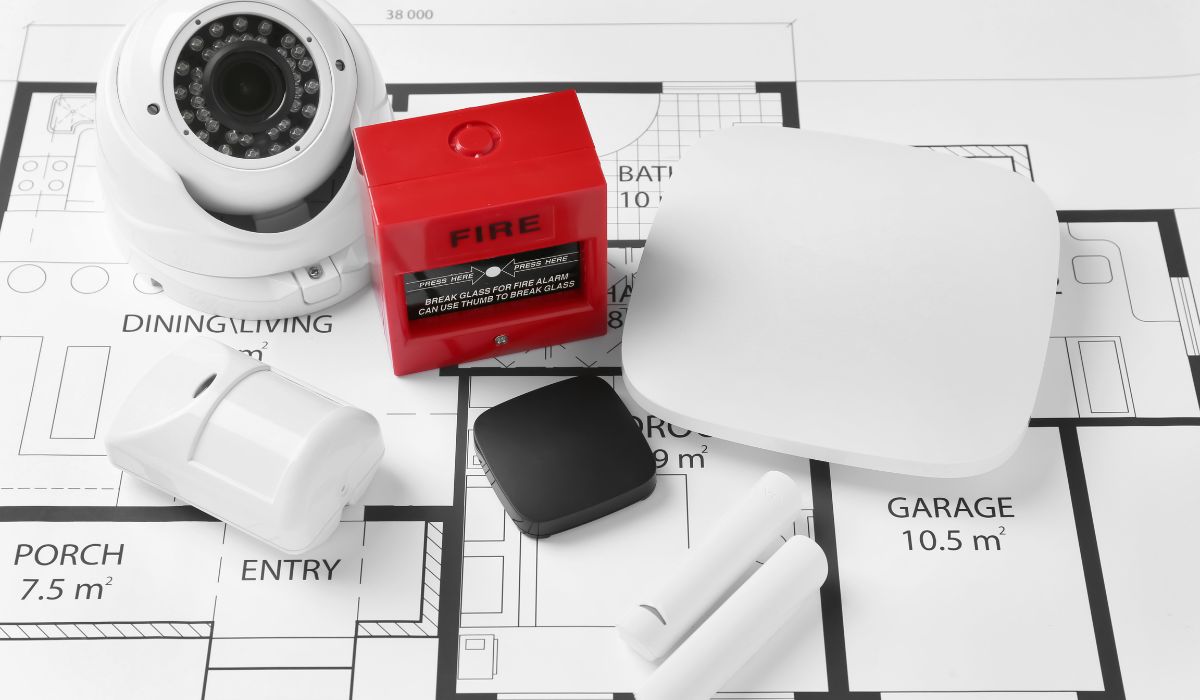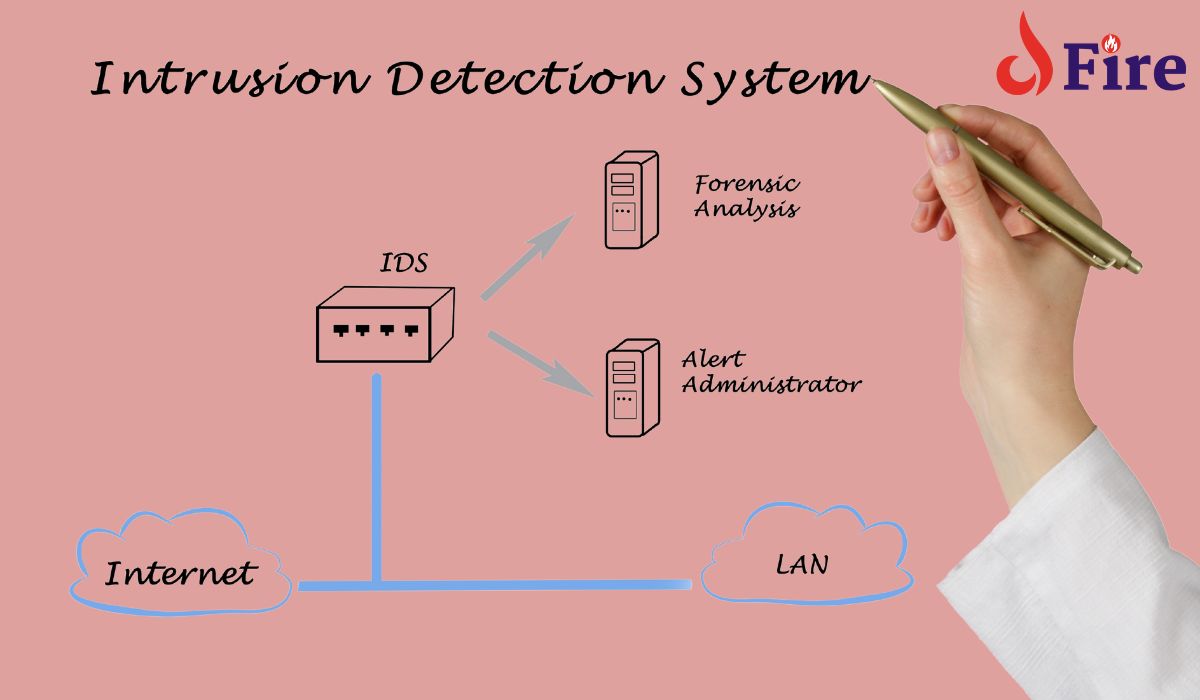A Fire Detection System is designed to discover and alert to the presence of fire. Its primary function is to protect lives and property by providing early warning.
Protecting structures and ensuring the safety of occupants, fire detection systems are vital components of building safety. These systems employ a variety of sensors to recognize smoke, heat, and flames, promptly initiating an alarm to alert occupants and emergency services.
Quick detection is crucial to minimizing damage and facilitating safe evacuation. Modern fire detection technology integrates with building management systems and can often pinpoint the exact location of the fire, enabling faster response times.
Regular maintenance and testing ensure these systems remain reliable in case of an emergency. State-of-the-art fire detection solutions are scalable, catering to the unique needs of both small businesses and large enterprises. By promptly detecting fire and warning occupants, these systems can dramatically reduce the risk of fatalities, injuries, and property damage.
The Urgency Of Fire Safety
Fire safety is a critical concern that touches on every aspect of our daily lives. Fires can strike anywhere, from homes to workplaces, and the damage they cause is often immeasurable, not only in terms of property loss but also in the loss of human lives. This necessity drives the widespread implementation of effective fire detection systems to ensure early warning and prevent potential disasters. Below, we explore the rising number of fire incidents across the globe and the dire consequences of inadequate fire protection measures.
Rising Fire Incidents Worldwide
Every year, fires take a toll on society that is hard to ignore. Data reveals an uptick in fire incidents worldwide, signaling a growing hazard. Key factors contributing to this rise include:
- Urbanization: More buildings mean more potential fire outbreaks.
- Electrical Malfunctions: Faulty wiring can easily spark a blaze.
- Climate Change: Hotter temperatures can fuel wildfires.
A robust fire detection system becomes essential in mitigating these risks.
Consequences Of Inadequate Fire Protection
Ignoring the need for effective fire safety measures can lead to devastating outcomes. Some of the consequences include:
| Lives Lost | Property Damage | Economic Impact |
|---|---|---|
| Injuries and fatalities increase. | Infrastructure destruction escalates. | Recovery costs burden economies. |
It’s clear that the stakes are high. Inadequate fire protection can result in irreversible losses. Therefore, societies must prioritize the deployment of advanced fire detection systems to safeguard lives and properties.

Credit: www.amazon.com
Fundamentals Of Fire Detection
Understanding how fire detection systems work is crucial for safety. These systems help prevent damage. They are the first line of defense against fire. Let’s dive into the world of fire detection and learn how technology helps us stay safe.
When a fire starts, it gives off signs like heat, smoke, and flames. Fire detection systems look for these signs. The goal is to find fires fast and warn people, so they can get away and call for help.
Heat, Smoke, And Flame Detectors
- Heat Detectors sense the rise in temperature from a fire.
- Smoke Detectors notice smoke particles in the air.
- Flame Detectors see flames using sensors.
The Science Behind Detection Technology
These detectors use special designs to catch fire signs early. They work with circuits and alarms to alert people.
| Type | How It Works | Common Use |
|---|---|---|
| Heat | Measures air temperature | In kitchens and garages |
| Smoke | Uses light to detect smoke | In homes and offices |
| Flame | Detects light from flames | In industrial areas |
Core Components Of Fire Detection Systems
Imagine a warrior without armor or a goalie with no gloves. That’s a fire without detection systems. Buildings need strong fire detection systems to stay safe. Let’s peel the layers of these systems.
Control Panel Essentials
The control panel acts as the brain for fire detection systems.
- Monitors signals from detectors and alarms
- Displays fire or fault conditions
- Allows the user to control settings
| Feature | Function |
|---|---|
| Indicators | Show system status |
| Manual Overrides | Let users manage alarms |
Types Of Fire Alarm Initiating Devices

Initiating devices alert the control panel at the first sign of fire.
- Smoke detectors sense smoke particles.
- Heat detectors react to temperature changes.
- Manual call points let people report fires.
Some devices are super smart:
- Beam detectors cover large areas.
- Flame detectors spot fire’s light.
- Gas detectors sniff out toxic fumes.
Importance Of Early Fire Detection
The Importance of Early Fire Detection cannot be overstated. When a fire breaks out, time is the most valuable asset. Detecting a fire early can save lives, preserve property, and minimize disruption. Advanced fire detection systems alert occupants quickly, initiating an effective response. Early detection lays the foundation for a strategic and life-saving reaction to potential disasters.
Impact on Evacuation Time
Impact On Evacuation Time
The sooner a fire is detected, the more time individuals have to evacuate safely. Quick alerts translate to early evacuation, reducing the risk of injury or worse. A rapid response ensures that everyone can reach safe zones before the fire escalates.
- Swift Alarm: Immediate fire detection triggers the alarm, alerting occupants within seconds.
- Critical Alerts: Provides vital information on the safest evacuation routes.
- Saved Lives: Extends the time for emergency services to arrive and assist.
Minimizing Property Damage
Minimizing Property Damage
Early fire detection systems play a pivotal role in protecting assets. They enable a swift firefighting response, curbing the spread of flames. This results in less damage, preserving the structural integrity of the building and protecting valuables.
| Aspects | Benefits |
|---|---|
| Quick Suppression: | Limits the fire’s growth, reducing repair costs. |
| Asset Protection: | Safeguards important documents and equipment from fire damage. |
| Future Security: | Ensures business continuity by preserving critical infrastructure. |
Innovations In Fire Detection

No one can predict when a fire will spark. Staying ahead means adopting innovative fire detection technologies. These game-changing developments are not just advancing safety—they’re reshaping how we protect our homes, businesses, and industries from the devastating impact of fires. Let’s dive into the latest advancements that are setting new standards in fire detection.
Smart Detectors and IoT
Smart Detectors And Iot
The age of smart fire detection has arrived. Smart detectors do more than just sound alarms; they communicate. Linked through the Internet of Things (IoT), these detectors provide real-time data directly to smartphones and emergency services.
- Receive alerts anywhere, anytime
- Remote monitoring enables swift action
- Connectivity ensures systems work together
Imagine a system that not only detects smoke but also guides you to safety. That’s the power of smart detectors intertwined with IoT.
Advancements in Sensitivity and Accuracy
Advancements In Sensitivity And Accuracy
New technologies are pushing the limits on how quickly and accurately fires are detected. Every second counts and precision is key.
- State-of-the-art sensors spot smoldering fires early
- Less prone to false alarms, so you trust the alerts
- Environmental adaptations mean smarter responses to different fire types
With these advancements, fire detection systems can distinguish between burnt toast and a real fire hazard, saving valuable time and resources.
Installation Best Practices
Fire detection systems are critical for safeguarding both property and life. Implementing a fire detection system requires precision and an understanding of the environment. The success of any system lies in the details of its installation. Attention to best practices during installation can make the difference between a system that fails when needed and one that performs flawlessly.
Site Assessment
Site Assessment
Initiating the installation process begins with a thorough site assessment. This involves understanding the layout and unique needs of the premise. Here are key steps to follow:
- Evaluate the building plans and identify potential fire sources.
- Determine the function of various areas, noting locations with heightened risk.
- Consult with local fire authorities on code requirements and compliance.
An in-depth site assessment is the foundation on which a robust fire detection system is built.
Zoning and Strategic Placement
Zoning And Strategic Placement
With the insights from the site assessment, zoning and placement take center stage.
- Divide the property into fire zones for focused monitoring.
- Install detectors in high-risk areas, such as kitchens and electrical rooms.
- Ensure clearances around detectors to prevent obstruction.
Strategic placement optimizes the system’s ability to detect fires early, offering the best chance for a safe evacuation and quick response.
| Zone | Detector Type | Location |
|---|---|---|
| Kitchens | Heat detectors | Above cooking equipment |
| Electrical Rooms | Smoke detectors | Ceiling center |
| Hallways | Smoke detectors | Every 30 feet |
Maintenance And Testing
Ensuring the efficacy of a Fire Detection System hinges on diligent maintenance and testing. A well-maintained system will respond quickly in an emergency, saving lives and property. Therefore, integrating a systematic approach to upkeep and evaluation is crucial.
Regular Schedule Recommendations
Maintain your fire detection system through a series of planned checks. Sticking to a schedule guarantees no component goes unchecked. For optimal safety, follow these guidelines:
- Weekly: Test manual call points and inspect indicator panels.
- Monthly: Examine batteries for corrosion or leakage.
- Annually: Conduct a thorough review by a certified professional.
Create a log to record each inspection. This practice aids in tracking the system’s health over time.
Troubleshooting Common Issues
Should your fire detection system encounter problems, address them promptly. Regularly face these issues:
| Issue | Possible Cause | Action to Take |
|---|---|---|
| False Alarms | Dust or debris in detectors | Clean detectors carefully |
| System Failures | Dead batteries or worn components | Replace batteries or faulty parts |
| Signal Issues | Malfunctioning communication devices | Test and repair communication modules |
Document all troubleshooting steps. This record helps prevent future occurrences of the same problem.
Credit: www.amazon.com
Compliance And Legal Requirements
Staying up-to-date with Compliance and Legal Requirements is vital for any property. It can seem tough. But it is your shield against legal troubles. Let’s unwrap the layers of building codes and industry standards for fire safety systems. They keep you safe and within the law. Homeowners, you must pay attention! Business owners, this is your must-follow guide. Property managers, understand this to avoid heavy fines and heartache.
Understanding Building Codes
Building codes are rules that tell us how to build safely. They make sure buildings are safe in case of a fire. These codes vary from place to place. They usually cover things like:
- How buildings are designed
- What materials to use
- Where to put fire exits
- How many smoke detectors are needed?
Check local laws to see what you need to do. It’s about keeping everyone safe.
Industry Standards For Fire Safety
Industry standards set the bar for fire safety. They touch on everything from the quality of your fire alarm system to how often you need to check it. Here’s a quick breakdown:
| Standard | Description | Frequency of Checks |
|---|---|---|
| Smoke Alarms | They must work and be in the right places. | Test monthly, replace batteries yearly |
| Fire Extinguishers | They must be easy to reach and work well. | Inspect yearly |
| Emergency Lighting | It must light up paths to safety. | Test monthly |
Follow these standards to keep your building safe. Seek out a professional for a detailed safety audit. Protect your property and the people in it.
Enhancing Fire Safety Awareness
Having a fire detection system is a crucial step in safeguarding any property. Yet, technology alone cannot ensure complete safety without proper awareness and training. Knowledge and preparedness form the backbone of a robust fire safety protocol. This section focuses on key strategies to heighten fire safety awareness.
Training Programs for Occupants
Training Programs For Occupants
Effective training programs are essential for building occupants. They equip people with the skills needed to react swiftly and correctly in case of a fire.
- Fire drills: Regular practice helps people remember steps during an emergency.
- Evacuation routes: Ensuring everyone knows the quickest, safest way out.
- Use of fire extinguishers: Hands-on experience makes a difference.
These programs should be interactive and engaging to maximize participation and retention of information. Occupants who are well-trained can make critical decisions faster, helping to minimize harm.
Creating a Culture of Safety
Creating A Culture Of Safety
Building a culture of safety requires ongoing effort. This culture empowers everyone to contribute to a fire-safe environment.
| Action | Impact |
|---|---|
| Posting signage | Reminds occupants of protocols. |
| Maintaining equipment | Ensures readiness at all times. |
| Reporting hazards | Prevents potential fire outbreaks. |
Through regular communication, sharing success stories, and recognizing proactive behaviors, a community can thrive with a shared goal of fire prevention and safety.
Case Studies
Studying real-life situations helps us understand fire detection systems better. Through case studies, we learn and improve. They show successful designs and teach us from past mistakes. Let’s explore both success and lessons in fire safety.
Successful Fire Detection Implementations
Effective fire detection systems save lives and property. Here are examples of successful implementations:
- The High-Rise Triumph: A smart detection system in a skyscraper provided early warnings and rapid response, preventing a disaster.
- The Warehouse Win: Thermal cameras in a large storage facility spotted an overheating machine before flames could start.
- Historic Building Preservation: Sensitive smoke detectors balance safety with the care needed for cherished landmarks.
Learning From Past Fire Incidents
History offers valuable lessons on fire safety. See how past incidents guided current fire detection tech:
| Incident | Lesson Learned | Outcome |
|---|---|---|
| Theater Fire Tragedy | Necessity of audible alarms | Installation of loudspeakers in public venues |
| School Fire Catastrophe | Importance of fire drills | Regular evacuation training enforced |
| Hotel Inferno | Need for automatic sprinklers | New regulations for the hospitality industry |
Future Of Fire Safety
Fire safety technology keeps getting smarter. Tomorrow’s systems won’t just sound alarms; they’ll predict and prevent disasters. Expect innovations that change how we protect our buildings from fire.
Predictive Analytics In Fire Detection
Predictive analytics use data to stop fires before they start. This technology looks at past fires and spots dangers today. It means buildings stay safer, detecting risks early.
- Heat pattern analysis: Spots unusual temperature spikes.
- Smoke trend examination: Identifies smoke movements sooner.
- Alarm response tracking: Improves future alarm accuracy.
Advanced software analyzes these elements, giving a clear risk picture. It sends alerts, helping teams act fast.
Integration With Building Management Systems
Connecting fire detection to building management systems (BMS) is key. BMS controls a building’s working parts. When fire systems link with BMS, the response is swift and smart.
A united system means:
- Immediate action: System can shut down risky areas.
- Efficient evacuation: Guides people out safely.
- Real-time updates: Offers vital information to responders.
Integration boosts reaction times and cuts down on damage. With all systems talking, safety gets a big upgrade.
Frequently Asked Questions Of Fire Detection System
What Is A Fire Detection System?
A fire detection system consists of devices designed to discover and alert people to the presence of a fire through visual and audio alarms.
How Do Fire Detectors Work?
Fire detectors work by sensing smoke, heat, or flames and triggering an alarm system to warn occupants of potential danger.
Can Fire Detection Systems Prevent Fires?
While fire detection systems cannot prevent fires, they play a critical role in early fire discovery, providing crucial time for evacuation and response.
What Types Of Fire Detectors Are Available?
There are several types of fire detectors, including smoke detectors, heat detectors, flame detectors, and gas detectors.
Are Fire Detection Systems Required By Law?
In many jurisdictions, fire detection systems are legally required in both residential and commercial properties to ensure safety standards are met.
How Often Should Fire Detection Systems Be Tested?
Fire detection systems should be tested regularly, with best practices recommending monthly testing to ensure functionality and reliability.
Conclusion
Safety is paramount; a robust fire detection system saves lives and property. By integrating advanced technologies, we can ensure quicker responses to emergencies. Remember, investing in a reliable detection setup is investing in peace of mind. Stay protected; prioritize your fire detection plans now.

I’m Abdus Sobur, a highly skilled and professional Fire Safety Officer with a passion for safeguarding lives and property. Over the course of my career, I’ve conducted numerous successful fire safety audits, earning a reputation for excellence in ensuring public safety.
In addition to my role as a Fire Safety Officer, I’m also dedicated to raising awareness about the importance of fire safety. Through my blog, I share insights into the functions of different fire safety equipment, aiming to empower individuals with the knowledge they need to protect themselves and their communities.
I’m driven by a deep commitment to promoting fire safety awareness and preventing fire-related incidents.

